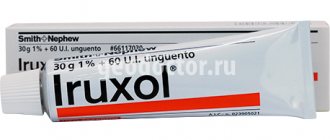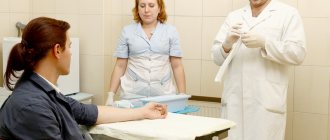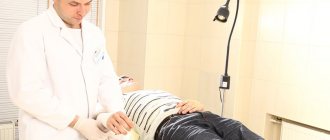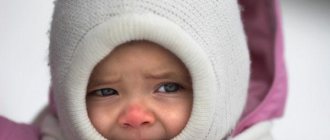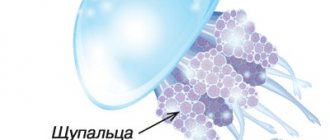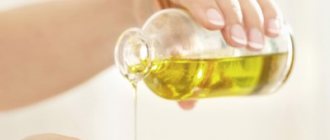Types of burns: there are many of them, and all are different
Burns are classified according to several criteria.
Cause of injury
According to this criterion, burns are divided into:
- Thermal burns caused by skin contact with hot objects, fire, boiling water, steam.
- Chemical burns caused by exposure to chemicals on the skin.
- Electrical burns, which are caused by electrical trauma from contact with household appliances, as well as from a lightning strike.
- Radiation burns. They are caused by prolonged exposure to ultraviolet, ionizing or infrared radiation.
Severity of injury and seriousness of damage
Based on this criterion, there are four degrees of burns:
- First degree - only the epidermis (upper layer of skin) is affected, redness and swelling are observed, and the burn site is painful. Healing, as a rule, occurs after a few days, no marks or scars remain.
- Second degree - not only the epidermis suffers, but also the deeper layers. Blisters containing fluid appear on the skin. The pain is severe and healing takes up to two weeks.
- Third degree - both the epidermis and all layers of the dermis (deeper layers of the skin) are affected. Not only blisters form, but also a brown burn crust. Complete healing of the burn occurs after a month; scars may remain.
- Fourth degree - the skin is charred, muscles, tendons, and sometimes bones are also damaged. Due to nerve damage, pain may not be felt. The burn surface becomes black. After healing, which can take a long time, pronounced scars always remain.
Often burns of varying degrees of severity can be combined - for example, a third-degree burn is diagnosed on a hand, and a first-degree burn on a leg.
Damage area
Depending on the size of the affected area, there are:
- Extensive burns, in which more than 10–15% of the skin is affected.
- Non-extensive burns, the affected area is insignificant.
DIAGNOSIS OF BURNS
Pain sensitivity is checked with a needle, scalpel or other piercing instrument.
Determination of the affected area. The total body area is 16,000 cm2. There are several rules for determining the affected area.
Rule of nines. It consists in the fact that one or another part of the body accounts for ~9% of the total body area. Head and neck - 9%, chest and abdomen - 18%, back - 18%, upper limb - 9%, thigh - 9%, lower leg and foot - 9% and perineum - 1%.
Palm rule. This rule is that the area of the patient's palm is 1% of the total area of his body.
A special sterile film with a millimeter pattern is applied to the affected surface, the affected areas are outlined, and then the affected area is calculated.
The Frank index is used to predict burn severity. The sum of the area of a superficial burn and triple the area of a deep burn constitutes the Frank index. If this index is less than 30 units, then the forecast is favorable, 30-60 units - a relatively favorable forecast, 60-90 units - the forecast is questionable, an index of more than 90 units - the forecast is unfavorable.
DEGREES OF THE SEVERITY OF THERMAL BURNS:
- lightly burned - burn area 15-20%, deep burn area - less than 10%;
- severely burned - burn area 20-60%, deep burn area - less than 40-50%;
- extremely severely burned - the burn area is more than 60%, the area of deep burns is more than 50%.
- A circular burn scab is especially dangerous, as swelling develops and compression of blood vessels occurs. In this case, a necrotomy is performed - the scab is cut to healthy tissue.
Burn disease is a complex of clinical symptoms that develops as a result of thermal damage to the skin and underlying tissues. Burn disease develops with superficial burns with an area of more than 15% of the body area and deep burns with an area of more than 10% of the body area.
There are 4 stages of burn disease.
BURN SHOCK (2-3 days). Burn shock develops immediately after the action of a damaging factor. This period lasts from several hours to 3 days, and it does not always end with a transition to the second stage, and there may be death. The volume of circulating blood decreases (hypovolemia) and blood thickening occurs (hemoconcentration). An increase in the number of erythrocytes (7-10 × 1012), an increase in the number of leukocytes (30-35 × 109) is detected in the blood.
Burn shock develops due to powerful afferent (pain) impulses. Toxic substances entering the blood cause microcirculation disorders and acid-base balance disorders. Local circulatory disorders lead to tissue swelling. At this stage, oliguria or anuria, oligemia, plasma loss, and acute circulatory disorders develop. The stage of burn shock is divided into 2 phases:
- erectile phase (excitement). A feature of the erectile phase of burn shock is a prolonged increase in the tone of the sympathoadrenal system, which determines the duration of this phase - from several hours to several days. The victim's activity sharply increases, he is excited, screams, calls for help, rushes about, tachycardia (palpitations) and tachypnea (rapid breathing) are characteristic;
- torpid phase (lethargy). A feature of the torpid phase of burn shock is the stability of blood pressure. Suppression of all vital forces gradually develops, the victim is lethargic, adynamic, is in a forced position, the skin is pale gray.
There are 4 degrees of torpid phase.
- Pulse is about 90 per minute, systolic blood pressure is 90-100 mm Hg. Art.
- The victim's condition worsens, he becomes covered in cold, sticky sweat, tachycardia develops up to 120-140 beats/min, the systolic blood pressure level is 70-90 mm Hg. Art.
- Pulse is about 120-160 beats/min, systolic blood pressure is 70-50 mmHg. Art.
- Agony. There is no consciousness, the skin is cold, covered with sticky sweat, gray in color, the mucous membranes are pale, dry, the pupils are dilated, they react poorly to light, there may be convulsions, systolic blood pressure is less than 50 mm Hg. Art.
SECOND STAGE of acute toxemia (20-40 days). Absorption of decay products from the burn surface occurs. The victim is either inhibited or excited (delirium, hallucinations, convulsions). Fever (39-40 °C), tachycardia, hypotension (low blood pressure), muffled heart sounds, rapid, shallow breathing, hypochloremia, hypoproteinemia (decreased blood protein), and metabolic disorders appear.
THIRD STAGE of septicotoxemia (blood poisoning by microbial waste products) (2-5 months). General symptoms of infection appear: fever, chills, leukocytosis.
Suppuration of the burn wound occurs. Bedsores form. Adynamia, apathy, lethargy, drowsiness, and cachexia (burn exhaustion) develop. At this stage, complications from internal organs may develop, most often pneumonia, skin abscesses, pericarditis, myocarditis, toxic and septic hepatitis, and renal and hepatic failure.
During this phase, the scab is rejected - the wound is exposed to the entire depth of the lesion and the process of wound granulation begins. During this period, plastic surgery is performed - skin grafting.
FOURTH STAGE OF RECONVALESCENCE (recovery) . The clinical picture collapses and the patient’s general condition normalizes. The wound begins to granulate (heal).
How dangerous are burns?
First and second degree burns, as a rule, do not pose a significant danger to human health - especially if they are not extensive.
Injuries of the third and especially fourth degrees, without taking appropriate measures, can cause severe intoxication of the body, the cause of which is overload of the liver and kidneys due to the removal of decay products of damaged tissues.
The body's immune defense is disrupted, making it easily susceptible to infections.
Both of these factors lead to exhaustion of the body, and then to death.
Proper first aid
Further recovery depends on how competent first aid is provided for a 2nd degree burn. The procedure is as follows:
- Remove the source of damage.
- Rinse the damaged area under running cold water.
- Treat the skin with an alcohol-free antiseptic.
- Apply a sterile bandage.
- Give pain medication as needed.
But here is what you should absolutely not do in case of a 2nd degree burn:
- tear off clothing stuck to the wound;
- cool the burn with ice;
- bandage the wound tightly or use cotton wool in the dressing;
- Lubricate the damaged area with oil, sour cream or alcohol.
After providing first aid, you should consult a doctor. Only a specialist will determine how to treat a 2nd degree burn and give individual recommendations. As a rule, such lesions are treated at home. The exception is burns of the respiratory system and esophagus.
First aid for burns
Any burn, no matter how minor, requires immediate action.
First of all, you need to cool the damaged area of skin (for this you can use a damp cloth or ice) and relieve pain (take a painkiller).
For sunburn, treat your skin with sunscreen.
If the burn appears extensive, it is necessary to assess its size. Experts recommend using the “rule of the palm.” The area of an adult's palm corresponds approximately to 1% of the skin surface, which means that the hand can become a measuring tool.
If the injury turns out to be serious (grade 3-4 and/or extensive burn), you must immediately call an ambulance.
While waiting for a doctor, do not try to clean the surface of the wound or open burn blisters! Do not treat the burn with green paint, hydrogen peroxide, potassium permanganate, or vegetable or animal fats.
Associated symptoms
With a 2nd degree burn, hyperthermia, swelling, and redness of the affected area most often occur. Liquid bubbles may form. When the blisters break, sores form. They will take about 2 weeks to heal. The listed symptoms may include pain and increased sensitivity at the site of the lesion. If the area of damage is extensive, vomiting, weakness, dizziness, and fever may occur. Particularly severe symptoms of 2nd degree burns occur in children.
Treatment methods
A 2nd degree burn with an affected surface area of less than 10–15% responds well to treatment in an outpatient setting and at home. The success of treatment and rapid healing largely depends on how quickly and competently first aid was provided for second-degree burns.
Outpatient treatment is aimed at creating optimal conditions for wound healing, protecting the affected area from mechanical damage and infection, as well as stimulating regeneration processes.
First aid for a 2nd degree burn involves the following sequence of actions:
- remove the source of damage;
- Cool the burn area under running cold water for 10–15 minutes. This prevents the burn from spreading deep into the dermis;
- carefully clean the burn site using gentle antiseptics, such as hydrogen peroxide solution;
- cover the burn site with a sterile bandage;
- If necessary, give the victim pain relief, ensure rest and drink plenty of fluids.
Local treatment can be carried out using open and closed methods. The first is most often used when the lesion is localized on the face and groin area, so as not to impede physiological processes.
Treatment with a closed method involves the application of atraumatic dressings, for example a dressing with the Peruvian balsam "Branolind-N". For 2nd degree burns, usually a single application of a bandage is sufficient to begin the epithelization process.
Drug therapy involves the use of antihistamines, anti-inflammatory and antiseptic drugs. Antiseptics are used in the first days of treatment; they prevent secondary infection of the wound. Antihistamines eliminate itching and help relieve swelling. Only a doctor can prescribe any medications for you; do not select medications on your own, consult your doctor first!
With proper care, complete healing occurs within two to three weeks. Whenever processing a burned surface, you must pay attention to its condition. If the pain intensifies, the swelling does not subside, but rather increases, and pus is released, it is necessary to seek medical help as quickly as possible.
Mild burns do not require treatment with antibiotics, except in cases where the affected area occupies a large surface. Antibiotics can also only be prescribed by a doctor.
Burn degrees
I (first) degree:
Only the outer layer of skin is damaged. It manifests itself as redness of the skin, pain, swelling at the site of exposure.
II (second) degree:
Damage occurs to the outer layer of the skin and the deeper layers below. Blisters form, the skin turns red, tissue swelling and severe pain appear in the affected area.
III (third) degree:
characterized by deep burns. There are burn degrees IIIA and IIIB.
IIIA degree:
All layers of the skin are damaged except the germ layer (the deepest). Large blisters filled with yellowish fluid and scabs form.
IIIB degree:
All layers of skin and subcutaneous fat are affected. Muscle, nerve and bone damage may also occur. Large blisters containing bloody fluid and a shriveled scab form.
IV (fourth) degree:
characterized by complete destruction of the skin, muscles and tendons. A dense, dark brown scab and areas of charring are formed.
Stages of treatment
The choice of therapy depends on the presence of concomitant diseases and the nature of the skin lesion. The standard approach involves solving specific problems at each stage of wound healing:
- Rejection of necrotic tissue. Treatment is carried out with an antiseptic and complex anti-inflammatory agents.
- Granulation. The blisters with liquid open, the inflammation gradually subsides, but the wound is open. At this stage, treatment with an antiseptic continues, dressings with wound-healing compounds are indicated.
- Epithelization. There is almost no pain, the wound is covered with fresh skin. Compositions are used that improve metabolism and stimulate regeneration.
It is not recommended to wet the wound until it has completely healed. Dressings are carried out according to schedule. The doctor monitors the situation in time to notice the worsening of the situation. Skin restoration lasts about 2 weeks.
Prevention of burns
Third-degree burns are especially dangerous for children and the elderly, so it is important to take preventive measures. What does it mean:
- Always check the water temperature before bathing your child;
- use only working electrical appliances;
- do not place pots and kettles with boiling water on the edge of the table;
- Do not keep matches and lighters and other potentially dangerous objects in a visible place.
Features of home therapy
After providing first aid for a 2nd degree burn, it is necessary to take a responsible approach to completing the course of treatment prescribed by the doctor. Rules that are recommended to be followed:
- eliminate heavy physical labor, since excessive stress provokes inflammatory processes in the body;
- avoid working in dusty and dirty objects to avoid infection of an open wound;
- Monitor the sterility of the dressings and follow the schedule for their replacement.
New tissues regenerate quickly if there are no complications due to external irritants. Recovery will take about 2 weeks, but may take up to 3 weeks for some. Healing slows down in older patients with chronic diseases. With successful therapy, recovery occurs without scars or scars.
